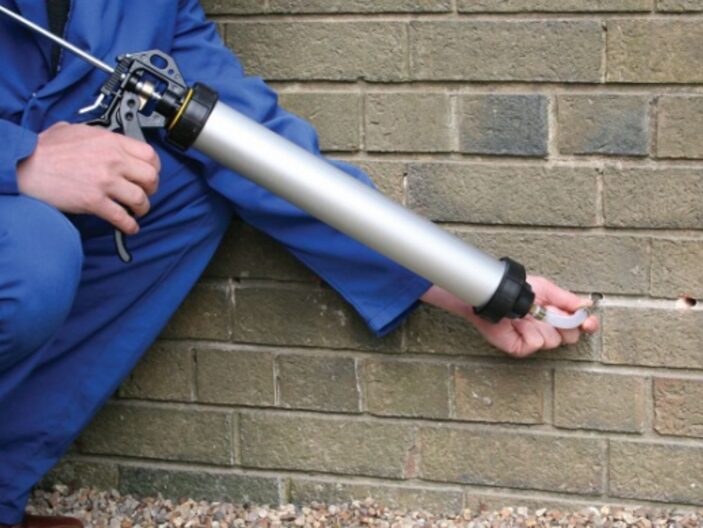Have you noticed damp patches on your walls or musty smells in your home? It might be time to consider chemical injection damp proofing.
In this article, we will explore what chemical injection damp proofing is, why it is important to damp proof your home, the different types of chemical injection damp proofing, and how to do it yourself.
We will also discuss safety precautions, how often you should damp proof your home, and alternatives to DIY chemical injection damp proofing.
Stay tuned to learn more!
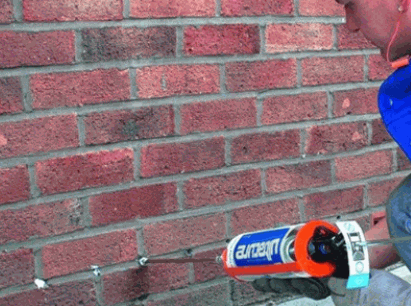
What Is Chemical Injection Damp Proofing?
Chemical injection dampproofing is a method used to prevent moisture penetration in building structures, specifically walls. It involves the application of a damp proof course, usually in the form of a chemical cream or injection, to create a barrier against water ingress.
This process is crucial for protecting buildings from the damaging effects of rising dampness, which can lead to structural issues and compromise the integrity of the entire property. The materials used in chemical injection damp proofing are designed to penetrate the masonry and form a barrier that repels moisture, preventing it from seeping through the walls. By addressing moisture issues promptly through this technique, property owners can maintain the structural stability of their buildings and avoid costly repairs in the long run.
Take a look: How To Damp Proof A Cellar DIY
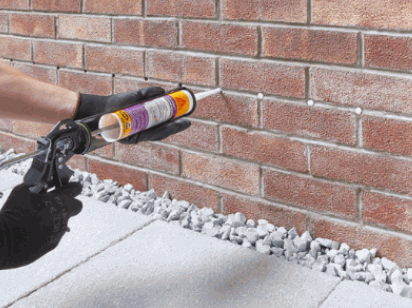
Why Is It Important To Damp Proof Your Home?
Damp proofing your home is crucial to protect the structure from moisture damage. Water ingress can weaken the building’s integrity, leading to structural issues and potential health hazards.
Excessive moisture in buildings can create a hospitable environment for mold growth which not only damages the aesthetics of the property but also poses health risks to its occupants. The presence of moisture can accelerate the rotting of timber, compromising the structural stability of the house. Dampness can lead to the deterioration of plaster, causing unsightly cracks and weakening the walls.
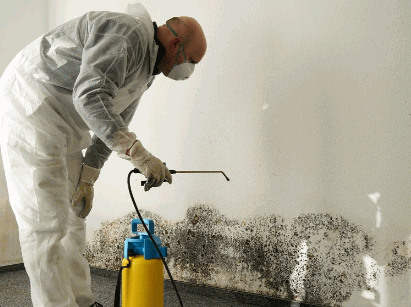
What Are The Signs Of Damp In Your Home?
Signs of dampness in your home can include musty odors, peeling paint, water stains on walls, and visible mold growth. These indications suggest underlying moisture issues that require immediate attention to prevent further damage.
Rising dampness, one of the common types of dampness in homes is characterized by damp patches appearing on walls, typically at low levels. A telltale sign of rising dampness is the presence of a distinct tide mark along affected areas.
It’s crucial to address rising dampness promptly as it can lead to structural damage and compromise the integrity of your home. Ignoring these signs can result in deteriorating plaster, damaged skirting boards, and even health hazards due to mold growth.
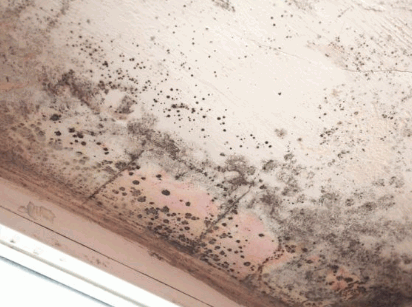
What Are The Different Types Of Chemical Injection Damp Proofing?
There are different types of chemical injection damp proofing methods available for building maintenance. These include silicone-based solutions, cream-based applications, and injection techniques.
Silicone-based damp proofing solutions are known for their flexibility and ability to create a waterproof barrier upon application. They are ideal for areas that are prone to movement or structural shifts.
On the other hand, cream-based applications are thicker in consistency and provide excellent water-repellent properties. They are often preferred for their ease of use and effectiveness.
Injection damp proofing techniques involve the insertion of a chemical solution directly into the masonry, creating a continuous barrier against moisture ingress. This method is widely used in retrofitting existing buildings to combat rising damp issues effectively.
Silicone-Based Damp Proofing
Silicone-based damp proofing solutions create a waterproof barrier on walls to prevent moisture infiltration. These products are known for their durability and resistance to external sources of water.
One of the standout advantages of silicone-based damp proofing products is their versatility in application. They can be easily applied to various surfaces, including brick, concrete, and stone, making them suitable for a wide range of building materials. This flexibility not only simplifies the installation process but also ensures a consistent level of protection across different types of structures. The long-lasting effects of silicone-based solutions make them a cost-effective choice for homeowners and builders looking to safeguard their properties from water damage.
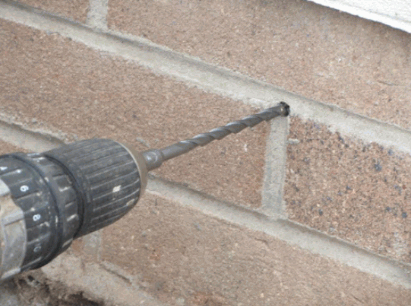
Cream-Based Damp Proofing
Cream-based damp proofing involves the application of a waterproof cream on walls to create a protective barrier against moisture. This method is popular for its ease of application and effectiveness in damp prevention.
Preparing for cream-based damp proofing typically involves cleaning the wall surface thoroughly to ensure optimal adhesion. Once the surface is clean and dry, the cream is applied using a specialized gun or trowel. Unlike traditional liquid damp proofing solutions, cream-based options offer excellent control over the application amount, minimizing wastage and ensuring precise coverage.
The penetration properties of cream-based damp proofing agents are noteworthy, as the cream can penetrate deep into the pores of the masonry, creating a lasting barrier against rising dampness and moisture ingress. This deep penetration results in enhanced protection and long-lasting damp proofing benefits.
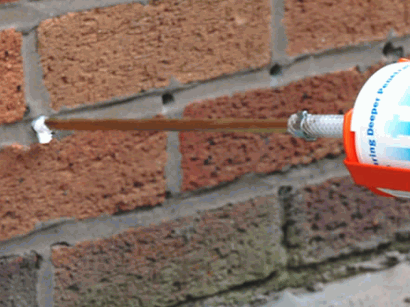
Injection Damp Proofing
Injection damp proofing involves the injection of chemical solutions into walls to create a moisture-resistant barrier. This method is effective in treating rising dampness and preventing further water penetration.
For the injection damp proofing process, the first step involves selecting the appropriate chemical solutions that can effectively create a barrier against moisture. Typically, these solutions are designed to penetrate deep into the walls and solidify, thus blocking the capillaries that allow water to rise through the masonry.
Next, technicians drill holes at regular intervals along the affected wall at a downward angle. These holes are strategically placed to ensure the entire area is treated thoroughly. Once the holes are in place, the selected chemical solution is injected under pressure into the holes, filling the gaps within the masonry.
After the injection process is completed, the treated areas are sealed to prevent any moisture from seeping back in. This thorough sealing process ensures that the damp proofing treatment remains intact over the long term, fortifying the structure against damp related issues and providing lasting protection.
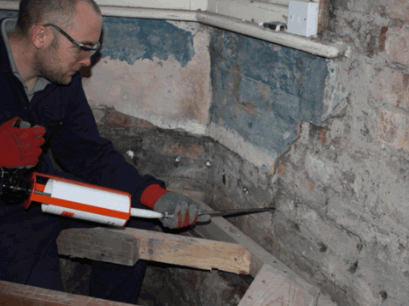
How To DIY Chemical Injection Damp Proofing?
DIY chemical injection damp proofing can be a cost-effective solution for addressing damp issues in your home. To begin, identify the affected areas and prepare the necessary materials and tools for the injection process.
Check the walls for signs of dampness such as water stains, peeling paint, or mold growth. Once you have located the affected areas, calculate the amount of injection solution needed based on the size of the walls.
Ensure you have protective gear including gloves, goggles, and a mask before starting the injection process to prevent any contact with the chemicals. Use a high-quality injection gun to apply the damp proofing solution evenly along the affected walls.
- Start from the bottom of the wall and work your way up, injecting the solution at regular intervals to create a barrier against moisture.
- Allow the injected solution to cure as per the manufacturer’s instructions, ensuring proper ventilation in the treated area.
Step 1: Identify The Affected Areas
The first step in DIY chemical injection dampproofing is to identify the areas of the building affected by damping. Use a moisture meter to assess the extent of moisture penetration and locate the problem zones.
Once you have identified the damp affected areas, it is crucial to pinpoint the specific problem zones that require treatment. Look for visible signs such as water stains, peeling paint, or mold growth as these indicate areas of high moisture levels. Pay close attention to corners, around windows, and near pipes as these are common areas where dampness can accumulate.
By conducting a thorough assessment and accurately identifying the problem areas, you can ensure that your chemical injection damp proofing treatment is targeted and effective. Remember, the success of the damp proofing process heavily relies on the precision of identifying and treating the root cause of the damp issue.
Step 2: Prepare The Materials And Tools
Gather the necessary materials and tools for DIY chemical injection damp proofing. This includes the damp proofing solution, injection equipment, protective gear, and the right quantity of materials for the job.
When embarking on a DIY chemical injection damp proofing project, it is crucial to start by selecting high-quality materials that will ensure the effectiveness of the treatment. Opt for a reputable damp proofing solution that suits your specific needs and the size of the area to be treated. You will also require injection equipment such as a high-quality pump or applicator gun for precise application.
Don’t forget to prioritize the safety aspect by investing in the necessary protective gear including gloves, goggles, and a mask to shield yourself from any harmful fumes or skin contact with the chemicals. It’s advisable to calculate the right quantities of materials in advance to avoid running out halfway through the project, causing delays and potential inconsistencies in the treatment application.
Step 3: Drill Holes And Inject The Damp Proofing Solution
Next, drill holes in the walls at designated intervals and inject the damp proofing solution into the cavities. Ensure thorough coverage of the affected areas to create a solid barrier against moisture intrusion.
To effectively inject the solution, it is crucial to use the correct pressure and technique. Start from the bottom up, filling each hole slowly to allow proper absorption and avoid air pockets. Maintain a steady hand to ensure even distribution of the solution throughout the wall. Patiently work through each hole, monitoring the flow to prevent overfilling. Completing this process meticulously will result in a comprehensive damp proofing treatment that safeguards your walls from dampness for years to come.
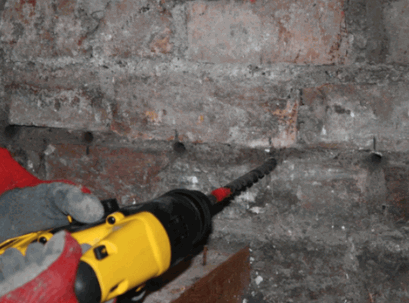
Step 4: Fill In The Holes And Allow The Solution To Dry
After injecting the damp proofing solution, fill the holes with suitable material to seal them properly. Allow the solution to dry completely before assessing the effectiveness of the treatment.
Once the holes are filled with the appropriate material, it is crucial to ensure that the area is left undisturbed for the recommended drying period. This will allow the damp proofing solution to settle and create a protective barrier against moisture infiltration. During this time, it’s essential to avoid any contact with the treated surfaces to prevent any disruption to the curing process.
After the drying period, conduct a thorough inspection of the treated areas to check for any signs of moisture seepage or other issues. If everything appears to be in order, you can proceed with any necessary repairs or cosmetic touch-ups to restore the affected surfaces.
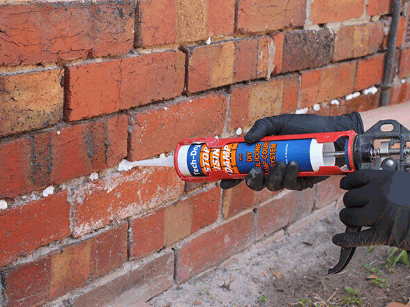
What Are The Safety Precautions When DIY Chemical Injection Damp Proofing?
When undertaking DIY chemical injection damp proofing, it is essential to prioritize safety precautions to protect yourself and others. Ensure proper ventilation, use appropriate protective gear, and follow the instructions provided with the injection tools.
Proper ventilation is crucial to prevent inhaling harmful fumes during the damp proofing process. Always work in well-ventilated areas and consider using exhaust fans or windows to improve air circulation. Wearing protective equipment such as gloves, goggles, and masks is vital to shield yourself from the chemicals.
It’s also important to carefully read and adhere to the recommended procedures outlined by the manufacturer of the injection tools and materials. Handling these substances improperly can lead to serious health risks. Ensure that all tools are used correctly to avoid accidents and spills.
How Often Should You Damp Proof Your Home?
The frequency of damp proofing your home depends on various factors such as the property’s location, age, and exposure to moisture. As a general guideline, it is advisable to conduct a thorough damp proofing assessment every few years or when signs of moisture issues surface.
Several environmental factors can influence the need for more frequent damp proofing maintenance. Properties in coastal areas or regions with high rainfall levels may require more frequent inspections and treatments due to increased exposure to moisture. Older homes with aging foundations or poorly sealed windows and doors are more prone to water damage, necessitating regular damp proofing checks.
Regular inspections and preemptive treatments play a crucial role in preventing extensive water damage and mold growth. By scheduling routine maintenance, homeowners can address minor issues before they escalate, ultimately saving time and money on extensive repairs in the long run.
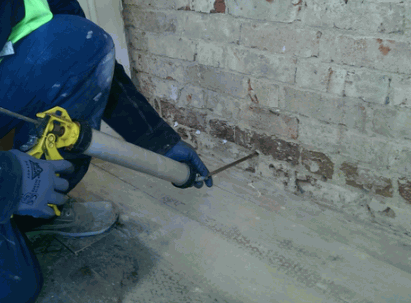
What Are The Alternatives To DIY Chemical Injection Damp Proofing?
While DIY chemical injection damp proofing can be an effective solution for some homeowners, there are alternatives available that may better suit larger projects or complex structural issues. Hiring professionals for damp proofing tasks ensures expert handling and comprehensive solutions.
Professional damp proofing services offer a range of benefits that DIY methods may not provide. Professionals have the expertise and experience to accurately diagnose damp issues and recommend the most suitable treatment options. This can save time and money in the long run by avoiding costly mistakes or ineffective solutions.
Professional damp proofing projects often come with warranties that guarantee the effectiveness of the treatment for an extended period. This added security can offer homeowners peace of mind knowing that their property is protected against damp related problems.
Professional services typically use high-quality materials and advanced techniques that may not be readily available to DIY enthusiasts. This can result in a more durable and long-lasting damp proofing solution that requires minimal maintenance over time.
